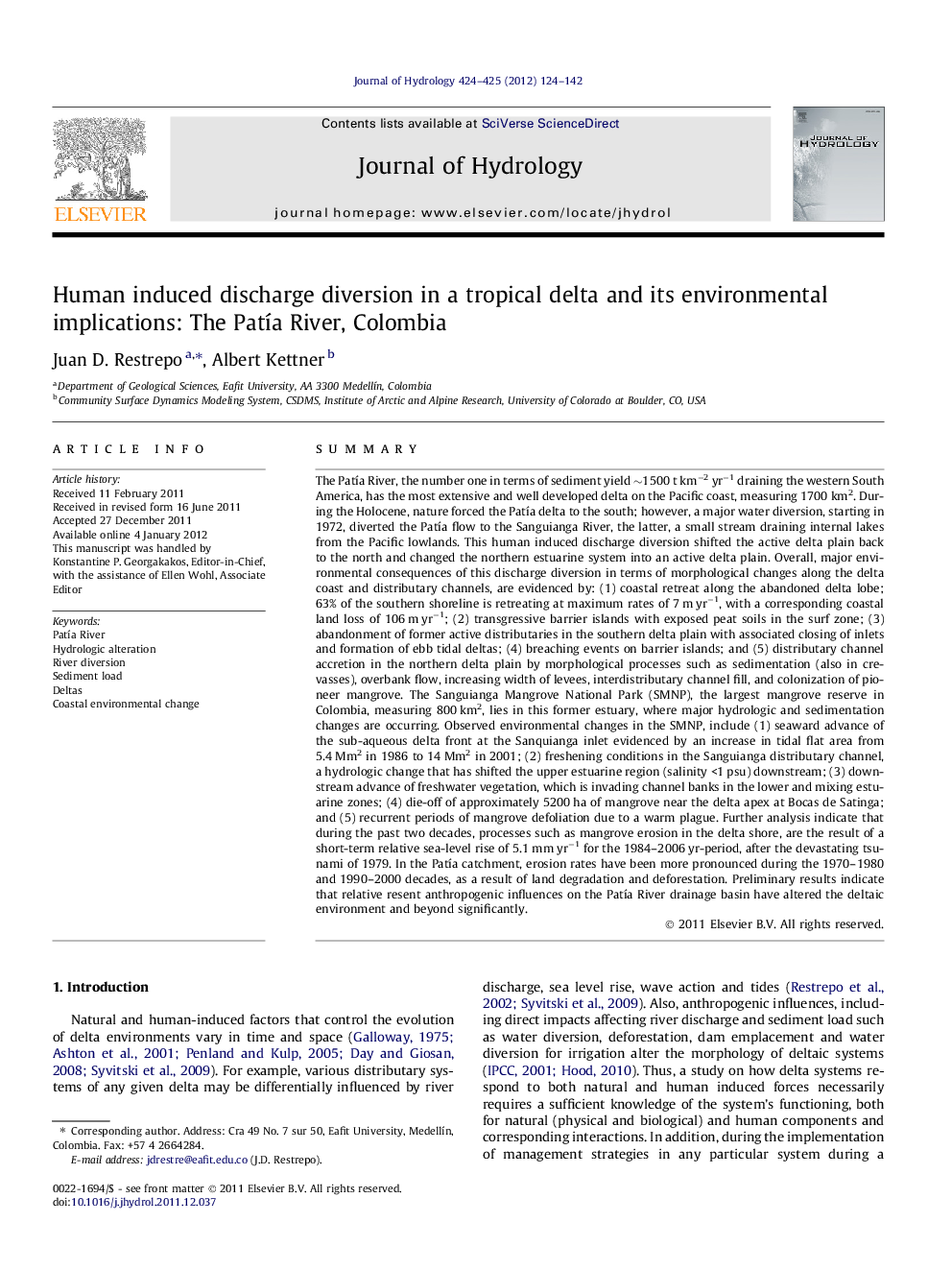| کد مقاله | کد نشریه | سال انتشار | مقاله انگلیسی | نسخه تمام متن |
|---|---|---|---|---|
| 4577103 | 1629999 | 2012 | 19 صفحه PDF | دانلود رایگان |

SummaryThe Patía River, the number one in terms of sediment yield ∼1500 t km−2 yr−1 draining the western South America, has the most extensive and well developed delta on the Pacific coast, measuring 1700 km2. During the Holocene, nature forced the Patía delta to the south; however, a major water diversion, starting in 1972, diverted the Patía flow to the Sanguianga River, the latter, a small stream draining internal lakes from the Pacific lowlands. This human induced discharge diversion shifted the active delta plain back to the north and changed the northern estuarine system into an active delta plain. Overall, major environmental consequences of this discharge diversion in terms of morphological changes along the delta coast and distributary channels, are evidenced by: (1) coastal retreat along the abandoned delta lobe; 63% of the southern shoreline is retreating at maximum rates of 7 m yr−1, with a corresponding coastal land loss of 106 m yr−1; (2) transgressive barrier islands with exposed peat soils in the surf zone; (3) abandonment of former active distributaries in the southern delta plain with associated closing of inlets and formation of ebb tidal deltas; (4) breaching events on barrier islands; and (5) distributary channel accretion in the northern delta plain by morphological processes such as sedimentation (also in crevasses), overbank flow, increasing width of levees, interdistributary channel fill, and colonization of pioneer mangrove. The Sanguianga Mangrove National Park (SMNP), the largest mangrove reserve in Colombia, measuring 800 km2, lies in this former estuary, where major hydrologic and sedimentation changes are occurring. Observed environmental changes in the SMNP, include (1) seaward advance of the sub-aqueous delta front at the Sanquianga inlet evidenced by an increase in tidal flat area from 5.4 Mm2 in 1986 to 14 Mm2 in 2001; (2) freshening conditions in the Sanguianga distributary channel, a hydrologic change that has shifted the upper estuarine region (salinity <1 psu) downstream; (3) downstream advance of freshwater vegetation, which is invading channel banks in the lower and mixing estuarine zones; (4) die-off of approximately 5200 ha of mangrove near the delta apex at Bocas de Satinga; and (5) recurrent periods of mangrove defoliation due to a warm plague. Further analysis indicate that during the past two decades, processes such as mangrove erosion in the delta shore, are the result of a short-term relative sea-level rise of 5.1 mm yr−1 for the 1984–2006 yr-period, after the devastating tsunami of 1979. In the Patía catchment, erosion rates have been more pronounced during the 1970–1980 and 1990–2000 decades, as a result of land degradation and deforestation. Preliminary results indicate that relative resent anthropogenic influences on the Patía River drainage basin have altered the deltaic environment and beyond significantly.
► We analyze the environmental consequences of the discharge diversion.
► We examine major morphological changes along the Patía River delta.
► Major part of the delta experiences coastal land loss.
► Increasing sedimentation is altering the largest mangrove reserve of the delta.
► Anthropogenic influences on the catchment have altered the deltaic environment.
Journal: Journal of Hydrology - Volumes 424–425, 6 March 2012, Pages 124–142